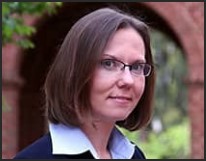by James A. Bacon
There is a shortage of doctors, scientists, engineers and other employees with STEM (science, technology, engineering, and medicine) backgrounds in the U.S. economy. One reason is that American institutions of higher education aren’t turning out enough graduates with STEM degrees. And a big reason for that is that roughly half the students who enter STEM programs drop out. The labor shortage is especially marked among Hispanics and African-Americans.
The University of Virginia is trying to address disparities in STEM degrees awarded by applying university funds to leverage a grant from the Howard Hughes Medical Institute — $7.7 million total over five years — to support the Driving Change and Inclusive Excellence 3 initiatives that aim to “enhance the academic experience and success of STEM students, particularly those who belong to historically excluded groups.”
The project director is Josipa Roksa, a professor of sociology and education who gained notoriety a decade ago as co-author of Academically Adrift, a book that demonstrated that more than one-third of college students showed “almost no significant improvement in learning” during their four years in college. Since then, her research has focused on racial/ethnic inequalities in learning.
The underlying problem is that many students who enter UVa STEM programs are academically unprepared for the courses taught.
“Students come into a rigorous academic environment,” said Provost Ian Baucom. “Not all students are equally prepared.” There are notable disparities in preparedness by race/ethnicity, gender, and socioeconomic status, he added.
“A lot of students feel like they do not belong academically,” said Roksa. Her goal is to help UVa faculty create classrooms where “all students feel like they belong” and to “make sure that all of our students thrive.”
Roksa’s presentation was focused more on the need for the program rather than detailing how the pedagogy might be restructured. But she did provide one example.
“Do we have a sense of why students don’t feel like they can do the work,” one board member asked.
“I’m not sure they can’t do the work,” Roksa responded. Rather, she said, “the conditions we create in our STEM environment are not conducive” to learning. For instance, she said, students from Southwest Virginia who attend schools with 50 kids in their grade might find it difficult to transition to an introductory STEM class at UVa where ten times that number might sit in an auditorium while a professor — “who is just a person on the stage” — lectures to them. “You don’t feel connected.”
The board meeting was running behind schedule so there was little time for discussion. No one asked an obvious question: why is UVa admitting students who are academically unprepared for its STEM programs?



